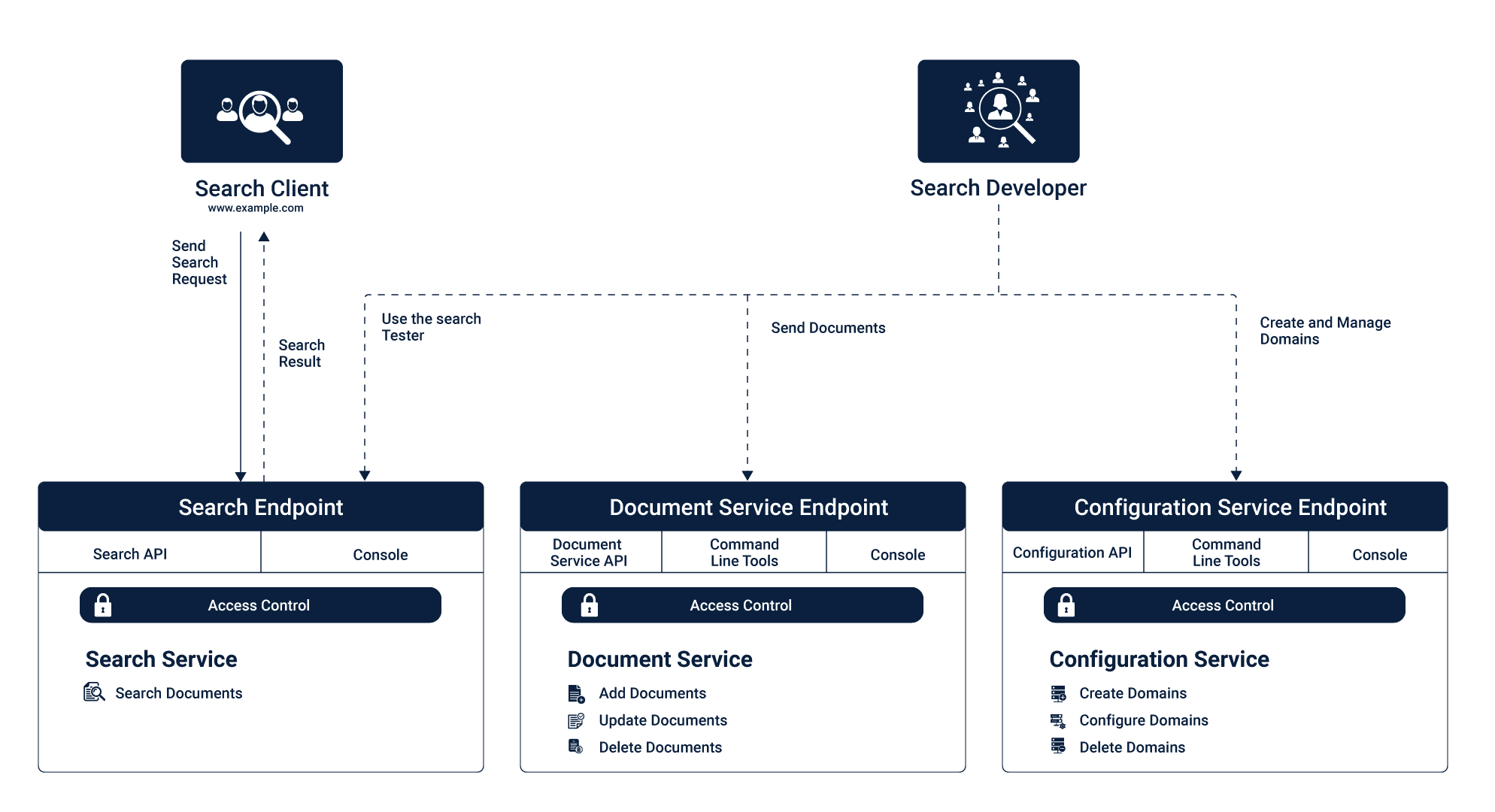Power of Amazon Cloud Search
 Srikanth Vaddeneni
Srikanth VaddeneniIntroduction:

Amazon CloudSearch, a fully managed search service, emerges as a game-changer, offering scalable and reliable search capabilities for applications without the need for extensive infrastructure management.
With Amazon CloudSearch you can search large collections of data such as web pages, document files, forum posts, or product information. You can quickly add search capabilities without having to become a search expert or worry about hardware provisioning, setup, and maintenance. As your volume of data and traffic fluctuates, Amazon CloudSearch scales to meet your needs.
You can use Amazon CloudSearch to index and search both structured data and plain text. Amazon CloudSearch features:
Full-text search with language-specific text processing
Boolean Search
Prefix searches
Range searches
Term boosting
Faceting
Highlighting
Autocomplete suggestions
Key Features::
Fully Managed Service: Amazon CloudSearch takes care of the heavy lifting associated with search infrastructure. AWS handles the deployment, scaling, and maintenance, allowing developers to focus on building great search experiences rather than managing servers.
Scalability: CloudSearch scales seamlessly to handle varying workloads. As your data or query volume grows, the service can be easily scaled up or down to ensure optimal performance.
Ease of Integration: Integrating CloudSearch into your application is straightforward. It supports multiple data formats, including JSON and XML, and can be easily integrated with other AWS services, such as Amazon S3 for data storage.
Multi-AZ Deployment: For enhanced availability and fault tolerance, CloudSearch supports a multi-availability Zone (AZ) deployment. This ensures that your search domain remains accessible even in the event of a failure in one availability zone.
To build a search solution with Amazon CloudSearch, you take the following steps:
Create and configure a search domain. A search domain includes your searchable data and the search instances that handle your search requests. If you have multiple collections of data that you want to make searchable, you can create multiple search domains.
Upload the data you want to search to your domain. Amazon CloudSearch indexes your data and deploys the search index to one or more search instances.
use cases with an example:
Let's explore a few real-world use cases of Amazon CloudSearch along with examples:
E-Commerce Search: Use Case: A popular online retail platform that wants to provide users with a seamless and efficient search experience to find products quickly.
Example: A user searches for "smartphones," and CloudSearch returns relevant results, allowing the user to filter by brand, price range, and customer ratings. The real-time indexing ensures that the latest products are immediately available in search results.
Content Discovery in Media and Publishing: Use Case: A digital media company aims to enhance content discovery on its streaming platform.
Example: A user searches for "sci-fi movies," and CloudSearch returns results with facets like genre, release year, and user ratings. The user can easily filter and sort the results to find the most relevant content.
Business Intelligence: Use Case: A financial analytics firm needs to provide its clients with a robust search feature to explore vast datasets for market trends and insights.
Example: A client queries for "tech stock performance in the last quarter," and CloudSearch delivers real-time results, allowing the client to filter by specific companies, time frames, and financial metrics.
Internal Knowledge Base: Use Case: A large corporation wants to create a centralized knowledge base for employees to quickly access internal documentation and resources.
Example: An employee searches for "company policies," and CloudSearch returns relevant documents. The search results can be further refined by document type, department, or the date of the last update.
Customer Support: Use Case: A customer support platform aims to improve issue resolution times by implementing a powerful search functionality for support tickets and knowledge base articles.
Example: A customer raises a ticket about a technical issue, and CloudSearch quickly retrieves relevant articles and past tickets, helping the support agent diagnose and resolve the problem more efficiently.
Creating and Managing Amazon CloudSearch Domains:
A search domain encapsulates the data you want to search, indexing options that control how you can search the data and what information you can retrieve from your search domain, and the search instances that index your data and process search requests. You can create, monitor, and delete domains using the Amazon CloudSearch console, AWS CLI, or AWS SDKs. All domain management actions are implemented by the Amazon CloudSearch configuration service.
Conclusion:
this fully managed search service has become an integral part of modern application development. Its scalability, ease of integration, and rich feature set make it a valuable tool for businesses looking to deliver exceptional search experiences to their users. Whether you're developing a small website or a complex enterprise application, Amazon CloudSearch empowers you to harness the power of search without the headaches of managing infrastructure.
Subscribe to my newsletter
Read articles from Srikanth Vaddeneni directly inside your inbox. Subscribe to the newsletter, and don't miss out.
Written by

Srikanth Vaddeneni
Srikanth Vaddeneni
Proficient in a variety of DevOps technologies, including AWS, Linux, Python, Shell Scripting, Docker, Terraform, and Computer Networking. I have a strong ability to troubleshoot issues.